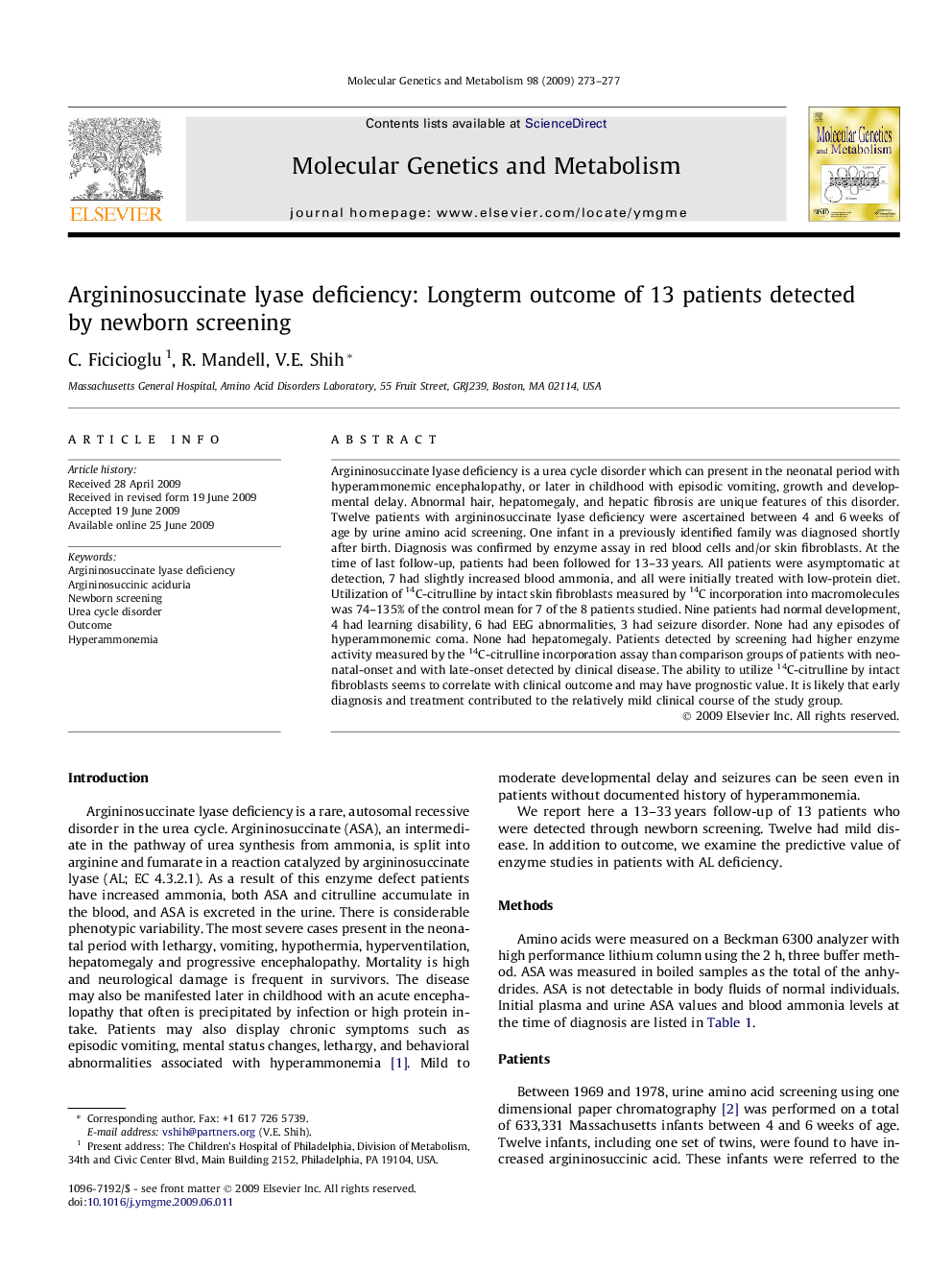| Article ID | Journal | Published Year | Pages | File Type |
|---|---|---|---|---|
| 1999783 | Molecular Genetics and Metabolism | 2009 | 5 Pages |
Argininosuccinate lyase deficiency is a urea cycle disorder which can present in the neonatal period with hyperammonemic encephalopathy, or later in childhood with episodic vomiting, growth and developmental delay. Abnormal hair, hepatomegaly, and hepatic fibrosis are unique features of this disorder. Twelve patients with argininosuccinate lyase deficiency were ascertained between 4 and 6 weeks of age by urine amino acid screening. One infant in a previously identified family was diagnosed shortly after birth. Diagnosis was confirmed by enzyme assay in red blood cells and/or skin fibroblasts. At the time of last follow-up, patients had been followed for 13–33 years. All patients were asymptomatic at detection, 7 had slightly increased blood ammonia, and all were initially treated with low-protein diet. Utilization of 14C-citrulline by intact skin fibroblasts measured by 14C incorporation into macromolecules was 74–135% of the control mean for 7 of the 8 patients studied. Nine patients had normal development, 4 had learning disability, 6 had EEG abnormalities, 3 had seizure disorder. None had any episodes of hyperammonemic coma. None had hepatomegaly. Patients detected by screening had higher enzyme activity measured by the 14C-citrulline incorporation assay than comparison groups of patients with neonatal-onset and with late-onset detected by clinical disease. The ability to utilize 14C-citrulline by intact fibroblasts seems to correlate with clinical outcome and may have prognostic value. It is likely that early diagnosis and treatment contributed to the relatively mild clinical course of the study group.
